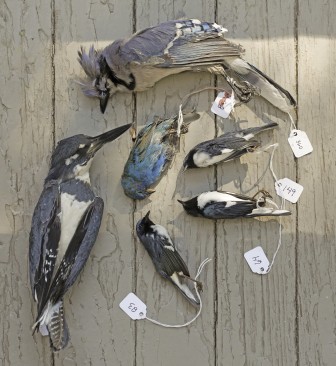Lights Out Programs: The Simple Switch That Saves Migratory Birds

As the night sky glows with city lights, it's easy to forget that this artificial brightness affects more than just our ability to see the stars. It also poses a significant challenge to millions of migratory birds traveling under the cover of darkness. Each year, vast numbers of birds traverse long distances, relying on natural cues like starlight to navigate. Excessive lighting in urban areas can disorient these nocturnal travelers, leading to fatal window collisions, disorientation, and unnecessary exhaustion. To combat this problem, some cities around the world have adopted "Lights Out" programs, a crucial initiative aimed at making urban environments safer for migrating birds during key periods of their journey.

The concept of "Lights Out" is simple -- yet effective. During peak migration seasons, spring and fall, residents, businesses, and city officials are encouraged to turn off or dim non-essential exterior lighting and window lighting during overnight hours. This reduction in light pollution during critical hours helps decrease the chances of birds being attracted to and disoriented by the lighting, which can lead to collisions with buildings.
Cities like Chicago, Toronto, and New York have been pioneers in this movement. These programs are often run in collaboration with local Audubon societies or wildlife organizations, which help monitor bird populations and advocate for policies that protect these aerial travelers. For example, New York City's "Lights Out New York" initiative is part of a broader effort that includes public awareness campaigns and partnerships with prominent buildings throughout the city to dim their lights during migration periods.

White-throated Sparrow in Chicago by Ryan Dickey [CC BY 2.0 Deed]
The impact of such initiatives can be profound. Research indicates that turning off lights can significantly reduce the number of birds killed due to building collisions. For instance, a study in Chicago found that bird collision deaths dropped by 80% in one building that participated in a Lights Out program (source). But complying with the program during the entirety of migration is key. This same building, McCormick Place, was also the site of a mass bird-collision event in October 2023 when the lights were not turned off as part of the program. Complying with bird-safe Lights Out programs has added benefits, including such as energy conservation, reduced carbon emissions, and building maintenance cost-savings.
Participation in "Lights Out" programs also serves an educational purpose. These programs raise awareness about the plights of migratory birds and the broader ecological impacts of human activities. For many city dwellers, these programs provide a tangible way to contribute to conservation efforts right from their homes or workplaces.

Washington DC window strike victims by USGS Bee Inventory and Monitoring Lab [Public Domain]
The success of "Lights Out" in major cities has inspired other municipalities to adopt similar measures. Smaller cities and even individual property owners are encouraged to participate by turning off unnecessary lights during migration seasons. This collective effort creates a safer passage for migratory birds, helping to ensure that these creatures can successfully complete their impressive and crucial journeys.
For bird enthusiasts, participating in or promoting "Lights Out" initiatives is a direct way to engage in bird conservation. It can be as simple as switching off extra lights at night during migration months or advocating for local policies that encourage broader community involvement. By spreading the word, supporting local Audubon chapters, or even participating in citizen science projects to monitor bird populations, individuals can make a substantial impact.
The beauty of the night sky is universal, and ensuring it can be navigated safely by our feathered friends is a responsibility we all share. The "Lights Out" programs represent a hopeful synergy between urban development and natural preservation, proving that even small changes in our behavior can facilitate major positive outcomes for wildlife conservation.





Comments
Leave a comment
Thank you!